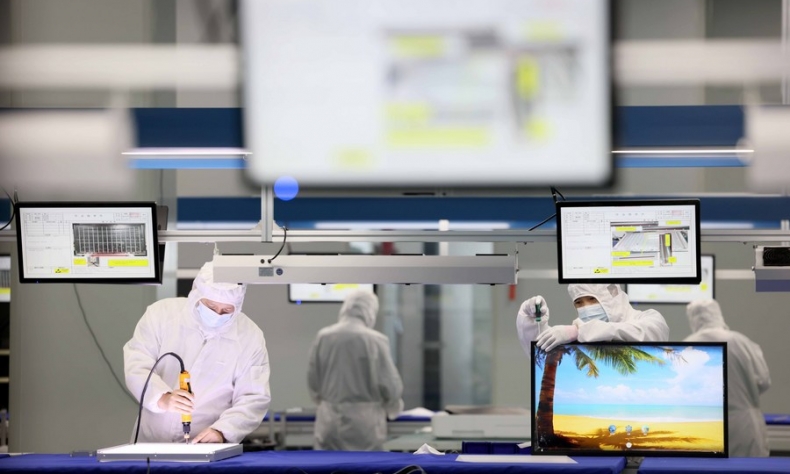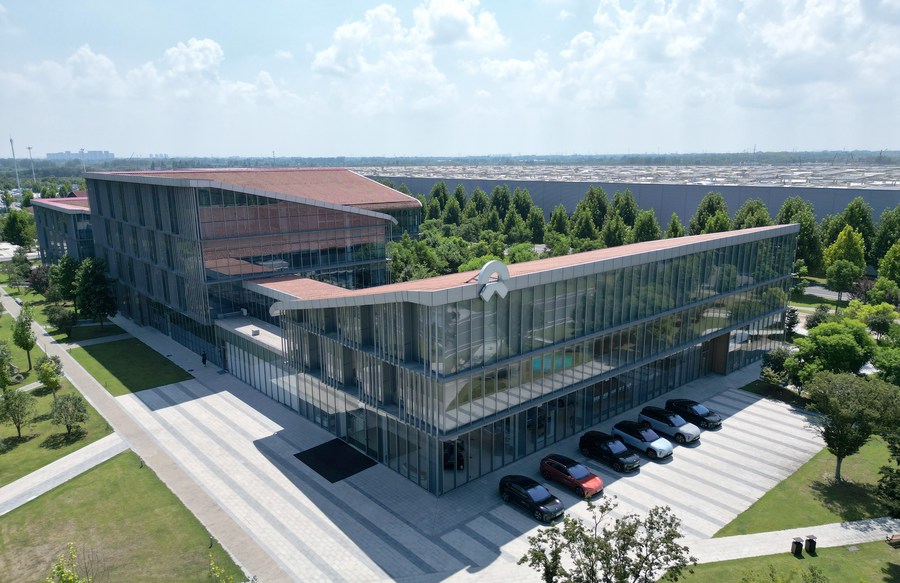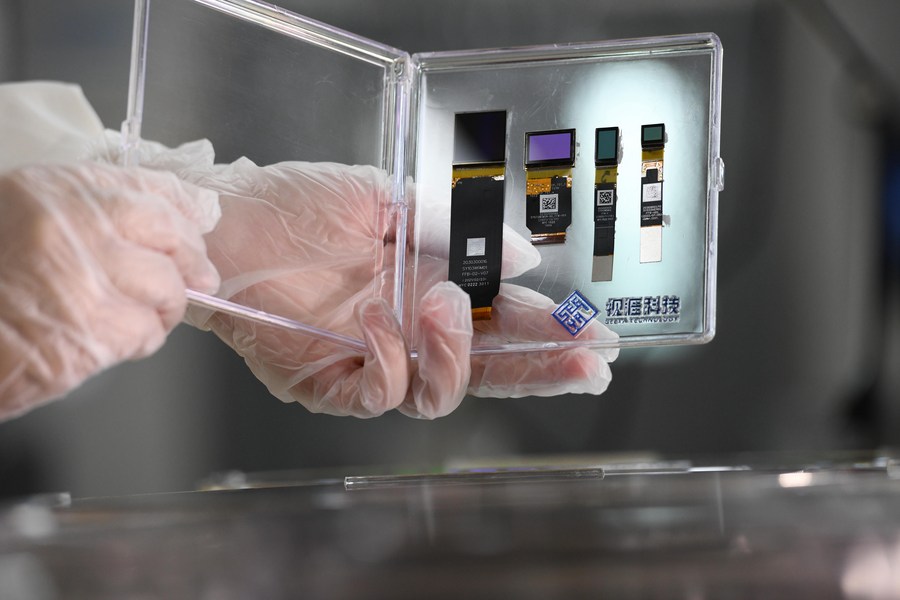The Miracle of Hefei: From Small to Smart

In over half a century, the once obscure town has turned into a globally renowned city for its science and technology innovation.
Modernizing the industrial system and developing new quality productive forces at a faster pace – this is one of China’s major tasks for 2024 as laid down in the Report on the Work of the Government.
Hefei, capital of Anhui Province, is a national science center. Over the past 40 years, the city has been taking the initiative in developing modern industries empowered by sci-tech innovation. Starting from the home appliance industry in the late 1970s, Hefei has closely followed the trends of technological revolution and industrial transformation, and gradually formed its own strengths in new leading industries, such as chips, display panels, new-energy vehicles, intelligent connected vehicles, smart manufacturing, and artificial intelligence (AI).
The Hefei model
Hefei became the capital of Anhui Province only after the founding of the People’s Republic of China in 1949. Over years of development, it has blossomed into a first-tier city with its GDP exceeding RMB 1 trillion and a population approaching 10 million.
Hefei’s new development path features inviting a leading company with large investment, and then building the whole industrial chain in the city. The Hefei model prioritizes cultivating competitive industries with skillful use of market capital.
The rise of three Chinese companies illustrates the story of Hefei’s transformation from an inconspicuous inland city in east China to a hub of high technology. In 2008, Hefei put one-third of its fiscal revenue into BOE and helped this struggling company build a production line for sixth-generation LCD display panels, the first of its kind in the Chinese mainland. Today, BOE is a giant with an annual revenue of billions of RMB, and Hefei is known as a global display industry base.
Eight years ago, ChangXin Memory Technologies was founded in Heifei with an investment of RMB 150 billion to develop and manufacture memory chips. Today, Hefei has built an industrial cluster for memory chip making.
In 2020, Hefei managed to raise RMB 7 billion in venture capital and tide smart electric vehicle (EV) maker NIO over its difficulties. After the EV maker built its headquarters in Hefei, globally leading EV companies, such as BYD and Volkswagen, also set up units, enabling Hefei to share the benefits of a booming EV market.
Operations that are seemingly risky are actually well thought out, serving the needs of local industries. For example, Hefei’s home appliances industry was the first in the city to generate a production value of RMB 100 billion. Today, Hefei has become the largest smart home appliance production base in China, with the total output of air conditioners, color TV sets, washing machines, and refrigerators ranking first in the country for 13 consecutive years.

The booming home appliance industry generated a massive demand for LCD screens, so enter BOE. Similarly, due to the presence of the local brand Jianghuai Automobile and an automotive industry cluster, NIO decided to move its headquarters to the city.
The Hefei model highlights institutional innovation. State-owned capital is used to finance strategically emerging industries. In this way, both an effective government and an efficient market are leveraged.
According to Huang Hanquan, president of the Academy of Macroeconomic Research, both management and institutional innovation should be given equal weight in developing new quality productive forces, as they can speed up scientific and technological innovation. Institutional innovation can be used to accelerate the transformation of traditional industries, cultivate strategic emerging industries, and make strategic arrangements for future industries.
New-energy vehicles (NEVs) are another example. Hefei has formed comparative advantages in the technologies, brand building, and scale of NEVs. In 2023, the city produced 740,000 NEVs, ranking fourth in China.
Hefei is also developing future industries, such as the low-altitude economy, aerospace information, quantum information, and fusion energy. EHang, which makes unmanned aerial vehicles (UAVs), signed an agreement with the local government to set up its eastern China headquarters in Hefei to promote UAV production, sales, and operations since the company has obtained the world’s first type certificate for passenger-carrying pilotless electric vertical take-off and landing aircraft (eVTOL).
Hefei has a cluster of over 100 aerospace enterprises, such as GEOVIS and PIESAT. Hefei also boasts China’s first quantum information themed sci-tech park for future industries, with a leading number of quantum patent authorizations nationwide. In addition, collaborative promotion of fusion energy technology in Hefei has promoted the application of the cutting-edge technology.
An emerging tech hub
Hefei’s 2024 Government Work Report pledges to speed up smart transformation, with the completion of more than 500 major projects covering all industrial enterprises above the designated size, so as to improve digital, intelligent, and networked connectivity.
In terms of digital intelligence, Hefei has been approved as one the first batch of national pilot cities for digital transformation of small and medium-sized enterprises, with 500 companies above the designated size to create benchmarks.

Hefei has been implementing an initiative for industrial Internet innovation. It supports collaborative application of SparkDesk, a homegrown AI large language model, and Antelope Cloud, a cross-domain industrial Internet platform, in industries, and facilitates the Antelope Industrial Cloud in empowering 430,000 local companies.
In terms of technological transformation and upgrading, Hefei has revised its subsidy policy. Currently, it provides a one-time subsidy of 15 percent of the equipment investment amount with a maximum reward of RMB 20 million to individual projects. In 2023, a total of RMB 940 million of policy funds was used, benefiting 327 enterprises. A total of 81 projects obtained over RMB 380 million in provincial-level government financial support for digital transformation.
Building a “silicon valley”
In June, Wang Qingxian, governor of Anhui, conducted a field investigation in the University of Science and Technology of China (USTC) Silicon Valley. He called for efforts to turn the USTC Silicon Valley into a test ground for the reform of science and technology system and a “high-yield farmland” for high-tech industries.
In 2022, the provincial government issued an action plan for the construction of the USTC Silicon Valley. Today, it is a high-tech hub with high-caliber professionals and global alumni of the USTC as its think tank. More and more companies have established their headquarters or regional offices on the campus.
Over the past two years, 1,391 innovative enterprises have settled down, and nearly 43 percent of quantum enterprises, 55 percent of aerospace information enterprises, and a half of bio-manufacturing enterprises in Hefei have gathered in the USTC Silicon Valley. It is expected that as of 2025, this “Silicon Valley” will attract over 100,000 outstanding high-caliber professionals, including alumni from both domestic and foreign universities and research institutes.
Hefei currently has 12 large-scale scientific facilities, making it a comprehensive national science center.
The city’s fine tradition of building a “magnet” for talent can be traced back to the 1970s, when the USTC moved out of Beijing into Hefei. In over half a century, the once obscure town has turned into a globally renowned city for its science and technology innovation.
Fu Zhaohuan & Hua Ming are reporters with China Development and Reform News.
 Facebook
Facebook
 Twitter
Twitter
 Linkedin
Linkedin
 Google +
Google +










